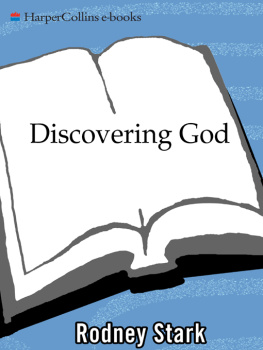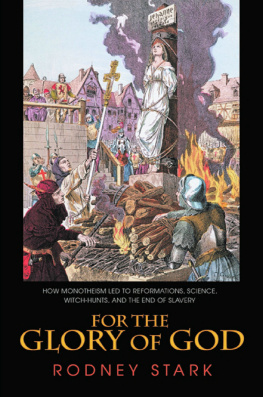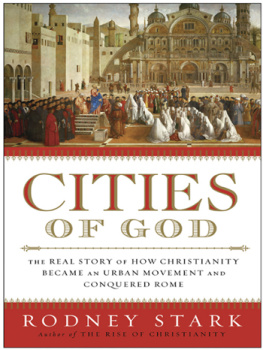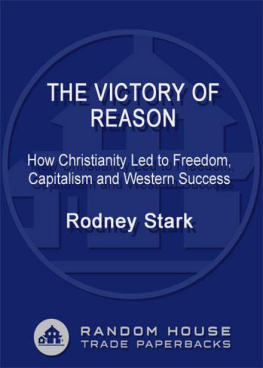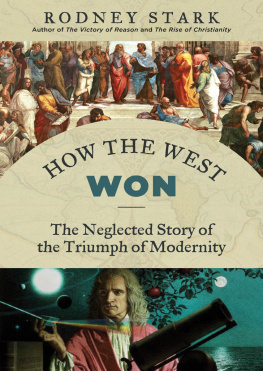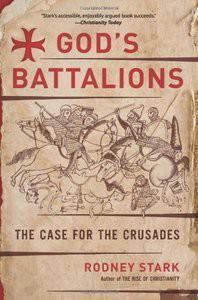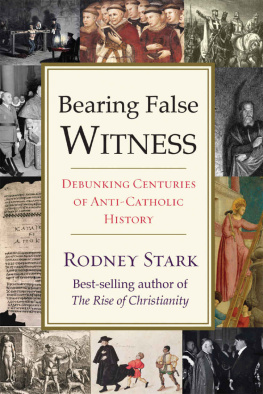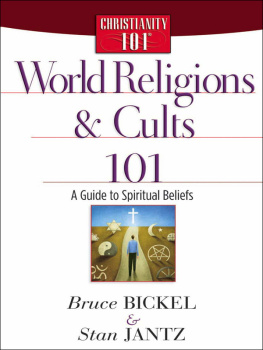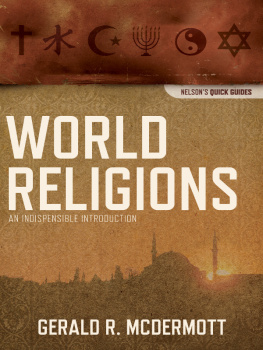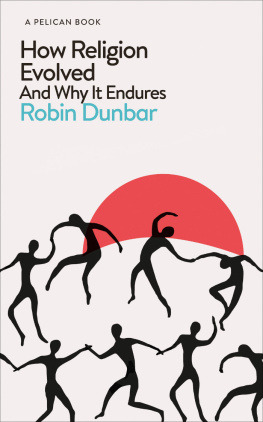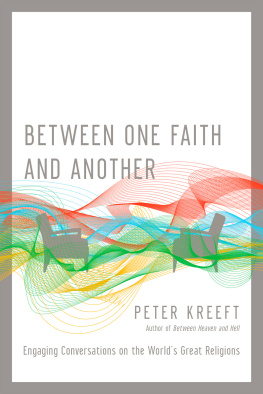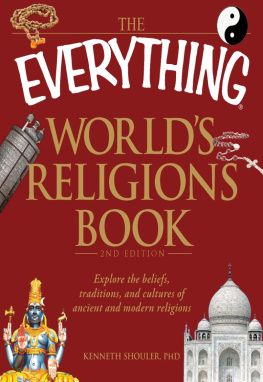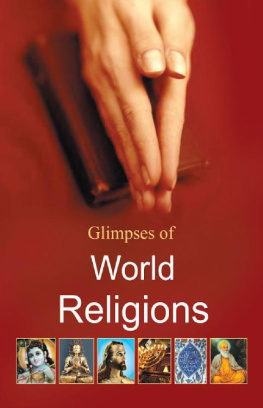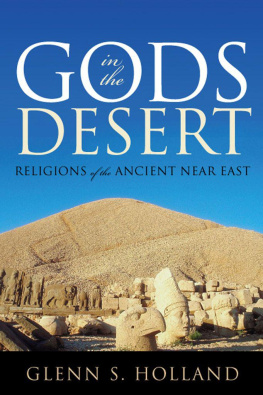Portions of Chapters 2, 3, 4, and 7 were given as Templeton Research Lectures at Vanderbilt University in February and March 2006. I thank the Vanderbilt faculty and staff, especially Volnay Gay and Mark Justad, for their hospitality. I usually decline such invitations, but these four visits to Nashville turned out very well.
Several people were of great help on this project. Eric Brandt, my very gifted editor at HarperOne, detected many places where more needed to be said, and several where the less said, the better. I also am grateful to Anna Xiao Dong Sun for help with Chapter 6, to David Lyle Jeffrey for comments on Chapter 7, and to Laurence Iannaccone and Roger Finke for serving as general sounding boards. My friend and colleague Byron Johnson saw to it that many potential distractions never materialized.
Let me also acknowledge dozens of used book dealers affiliated with Amazon and with Barnes & Noble for providing me with several hundred books, most of them long out of print. Nearly all of these are celebrated works that, sad to say, were available at very low prices after having been discarded by college and university libraries. So, my special thanks to the librarians at the California Institute of Technology for discarding a fine unabridged, three-volume copy of The Golden Bough (1900), to the librarians at Loyola Seminary in New York for my copy of Wilhelm Schmidts invaluable and rare The Origin and Growth of Religion (1931), to their colleagues at Albion College who sold off W. Robertson Smiths Lectures on the Religion of the Semites (1889), and to the staff at the University of Washington Library for scrapping J. Stuart Hays The Amazing Emperor Heliogabalus (1911).
Finally, I have tried to make this book easily accessible to readers who have no background in comparative religion, while still maintaining a high level of scholarship. To that end I have set in boldface and defined important esoteric or technical termswhether the names of Gods or of social-science conceptsas they enter the narrative, and these also appear in a glossary at the end of the book. These terms aside, I have tried to write everything else in plain English. I do not concede that this in any way compromises sophistication. What it does do is prevent me from hiding incomprehension behind a screen of academic jargon.
Corrales, New Mexico
February 2007
S INCE I WAS VERY YOUNG I have often wondered about God. Does he really exist? If so, where was he before he revealed himself to Abraham? Were many generations of humans condemned to live and die in ignorance, followed by many generations during which only the Chosen Few knew God? Or could it be that from earliest times God has revealed himself often and in various places so that many different religions possess at least fragmentary knowledge of divine will? If so, why do even some very major religions seem to lack any trace of divine inspiration?
Questions such as these prompted me to fully reassess the origins and cultural evolution of the worlds great religions, a topic that once attracted many distinguished philosophers, anthropologists, and sociologists, although today it is dominated by biologists and evolutionary psychologists. No matter. This entire body of recent work is remarkably inferior because so few authors could restrain their militant atheism.1 Contempt is not a scholarly virtue, and most of these scholars openly presumed that Gods2 exist only in the human imagination, that religion arises mainly from fear, and that faith is sustained only by ignorance and credulity. Richard Dawkinss latest title tells it all: The God Delusion .
Not only does the topic of religious evolution tend to attract those antagonistic to religion, but comparisons among religions can easily be corrosive to faith because one must confront the fact that, since they disagree, not all religions can be entirely true. From there it is a small step to conclude that all religions are false, that all are refuted by all, as the renegade monk Jean Bodin put it in 1593.3
Ironically, the similarities among the worlds religions also are taken as proof that they all are human inventions. The most famous proponent of this view was James Frazer (18541941), who published his monumental The Golden Bough in twelve volumes beginning in 1890. Frazer was born in Glasgow, Scotland, and spent his entire career at Trinity College, Cambridge. He worked for sixty years, with hardly ever a day off,4 to compile an enormous set of examples in order to argue, among other things, that tales of crucifixion and resurrection are commonplace in world mythology, and so is the notion of a divine manas a scapegoata dying god chosen to take upon himself and carry away the sins and sorrows of the people.5 Hence, Frazer devoted considerable space to claiming that the Christian Passion Narrative derives from myths about the deaths and resurrections of Attis, Adonis, and many others, and that it is a reenactment of the Jewish festival of Purim [which] is a continuation, under a changed name, of the Babylonian Sacaea [which is] a reminiscence of the ancient custom of crucifying or hanging a man [Haman] in the character of a god at the festival.6 Acknowledging that Easter is a month later than Purim, Frazer proposed that Christian tradition shifted the date of the crucifixion by a month in order to make the great sacrifice of the Lamb of God coincide with the annual sacrifice of the Passover lamb.7 Next Frazer proposed that the crucifixion with all its cruel mockery was not a punishment devised for Christ, but was merely the fate that annually befell the malefactor who played Haman [in the original Purim ritual].8 Frazer continued along these lines at great length, attempting to demonstrate that the conception of a dying and risen god has been popular in all the early civilizations from time immemorial.9 He ended by suggesting that Jesus could have been no more than a moral teacher, whom the fortunate accident of his execution invested with the crown, not merely of a martyr, but of a god.10
The Golden Bough made Frazer the most admired anthropologist of his day, and he was knighted in 1914. Nevertheless, Frazer ignored the most important question raised by his huge study: Why is there so much similarity among religions? Aside from saying that humans are inherently gullible, Frazer was content to postulate that once someone, somewhere had made up a myth or a ritual, it soon spread (or diffused) to other cultures, readily crossing substantial barriers of geography, language, and time. Of course, neither Frazer nor any of his many admirers would entertain the possibility that the common source of religious culture might be spiritual.
Perhaps that is why social scientists have displayed very little interest in the remarkable fact that, although they were scattered from Southern Italy to China, many of the great religious founders were contemporaries. As shown on Map 11 on the next page, Buddha, Confucius, Lao-Tzu (Taoism), Zoroaster, Mahavaira (Jainism), the principal authors of most of the Hindu Upanisads , Grecian innovators such as Pythagoras and the unknown founder of Orphism, even the Israelite prophets Jeremiah and Ezekiel, as well as the biblical author referred to as Second Isaiahall lived in the sixth century bce! Was this pure coincidence? An example of diffusion? Evidence of repeated revelations? Or what? On this, the social-scientific literature has had very little to say, and most of what has been said uniformly ignores or specifically denies any spiritual aspects.11 Oddly enough, this literature also ignores compelling evidence of substantial diffusionsome of these founders appear to have been greatly influenced by one another, especially in India.

